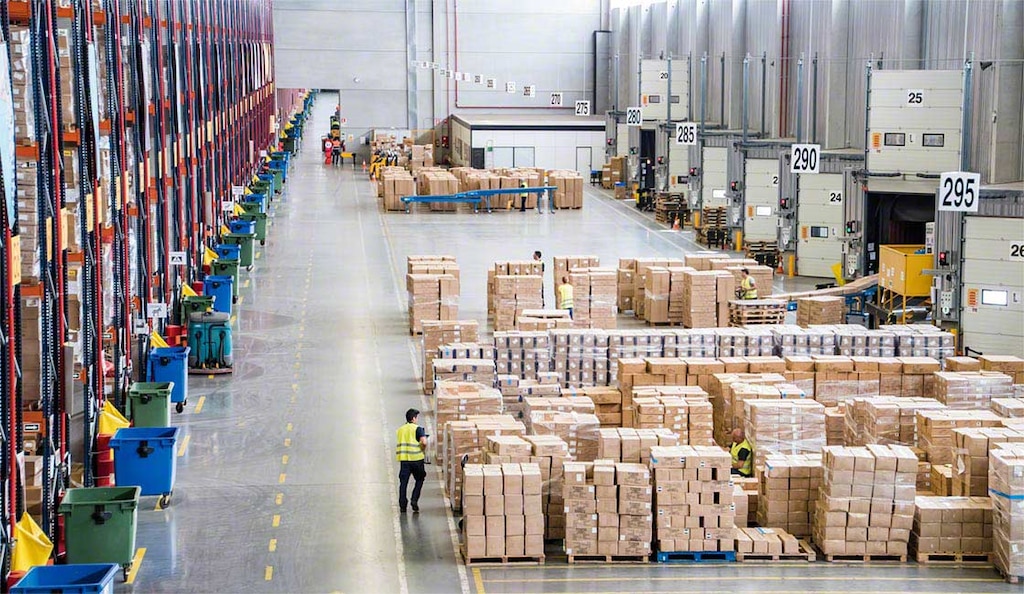
Capillary distribution: Optimizing last-mile delivery
Capillary distribution is an essential strategy for improving last-mile delivery, one of the biggest logistics challenges companies face. When implemented effectively, it streamlines distribution processes, ensuring products reach their destination error-free and on time.
By optimizing delivery routes and using the right vehicles, businesses not only cut operational costs but also enhance the customer experience with fast, reliable deliveries.
What is capillary distribution?
Capillary distribution is the process of transporting goods from a warehouse — usually a distribution center (DC) — to the end customer or a point of sale located in a city. Also known as urban distribution, it involves short delivery routes, multiple stops, and relatively small shipment volumes compared to long-haul transportation.
The concept of capillarity in logistics refers to the ability of a distribution network to efficiently reach a large number of destinations, even in hard-to-access areas. To achieve this, capillary distribution relies on vehicles suited to navigating city traffic, such as medium-sized vans, electric vehicles, cargo bikes, or motorcycles. Another key characteristic is the presence of DCs set up close to delivery points. This reduces delivery distances, improves lead times, and enables couriers to make multiple stops efficiently and sustainably.
Which sectors rely on capillary distribution?
Capillary distribution is widely used in industries where speed and efficiency in outbound logistics operations are critical for successful product delivery. Below are some sectors that benefit from this distribution approach:
- Ecommerce. Home deliveries and store restocking require fast, well-organized last-mile logistics operations.
- Food and beverage. Delivering fresh or ready-to-consume products calls for speed and temperature control. For frozen goods, it’s crucial to keep the cold chain intact.
- Pharmaceutical and healthcare. Medicines, medical supplies, and equipment must reach pharmacies and hospitals reliably and on tight schedules.
- Automotive and spare parts. Workshops and dealerships rely on just-in-time logistics operations and need components supplied quickly to minimize downtime.
- Retail. High product turnover and deliveries to end customers or service points require an efficient and structured distribution network.

What are the advantages of capillarity in logistics?
Capillary distribution offers significant benefits for sectors requiring fragmented, frequent, and short-distance deliveries within urban areas. Without it, some shipments would be delayed too long, failing to meet consumer expectations. These are some advantages of capillary distribution:
- Greater coverage and accessibility. It reaches urban, rural, and hard-to-access areas where conventional distribution faces more constraints.
- Short delivery times. Unlike long-haul shipping, which employs groupage (i.e., goods consolidation), capillary distribution uses smaller vehicles that enable faster, more frequent deliveries. This factor is paramount for industries like ecommerce, food, and pharmaceuticals.
- Less stock at points of sale. Frequent replenishment means stores aren’t overloaded with inventory.
- Improved customer experience. Short lead times and personalized deliveries boost satisfaction and loyalty.
- Lower environmental impact. The use of smaller, more sustainable vehicles with electric and low-emission options helps protect the environment.
Capillary distribution processes
Capillary distribution consists of several key processes that ensure timely deliveries to end customers or points of sale.
- Order fulfillment. When products arrive at DCs or intermediate warehouses, their quantity, quality, and condition are verified before distribution. Another option is to implement cross-docking, which involves transferring products directly from an inbound vehicle to an outbound one, minimizing storage time.
- Route planning and vehicle loading. Routes are optimized using software to reduce time and costs. Vehicles are assigned based on the weight, volume, and type of goods.
- Transportation and delivery. Distribution is carried out according to demand, with scheduled or on-demand deliveries. This process calls for accuracy to meet punctuality standards and specific requirements, such as maintaining the cold chain for temperature-sensitive food or pharmaceuticals.
- Incident management. Deliveries are monitored in real time to resolve issues like delays, order changes, or other difficulties.
- Confirmation and tracking. Deliveries are recorded digitally, providing confirmation and enabling real-time tracking to enhance transparency and customer satisfaction.
This process flow streamlines distribution, optimizing time and costs while maintaining a high level of service.

Example of capillary distribution: Coca-Cola
Companies with large-scale distribution networks, such as Coca-Cola, have developed highly efficient capillary distribution models. The beverage brand relies on a global network of distributors and bottling partners that apply a capillary system to ensure its products reach millions of points of sale worldwide — from major supermarkets to small stores and restaurants. Here are some key aspects of its model:
- Partner network. Coca-Cola operates through a network of logistics partners and intermediate warehouses across regions to bring its products closer to local markets. One example of this capillary model is the Coca-Cola Refrescos Bandeirantes DC in Trindade (Brazil), equipped with Mecalux storage systems.
- Diverse fleet. The business uses trucks for large-volume deliveries and smaller vehicles for local store deliveries.
- Frequent replenishment. Regular distribution keeps inventory levels optimal at each point of sale.
- Route optimization. The multinational company plans efficient capillary delivery routes and reduces logistics costs through advanced technology.
Coca-Cola’s capillary distribution model ensures constant product availability at virtually every sales point.
Capillary distribution with logistics software
Capillary distribution presents logistical challenges such as route optimization, inventory management, and coordination across regions. To tackle them, many companies turn to technology for greater agility and accuracy.
Warehouse management systems (WMSs), along with other tools such as transportation management systems (TMSs), help streamline shipment planning and resource allocation. Additionally, distributed order management (DOM) systems — such as Interlake Mecalux’s Easy DOM — determine the best shipping point and coordinate order flow across complex networks.
Easy DOM is especially beneficial for integrating and synchronizing all supply chain stakeholders, including warehouses, stores, 3PL providers, carriers, ERP systems, marketplaces, and call centers. This capability is ideal for large companies with omnichannel strategies, high daily shipping volumes, and multi-region operations.
Getting capillary distribution right with technology
Businesses with capillary distribution operations need technology to help them manage their logistics networks efficiently. To stay competitive in dynamic markets, they have to synchronize orders, optimize shipping points, and guarantee fast, error-free deliveries.
If you’re looking to improve your capillary distribution operations, contact us. We’ll help ensure your products reach their destination quickly and reliably.
